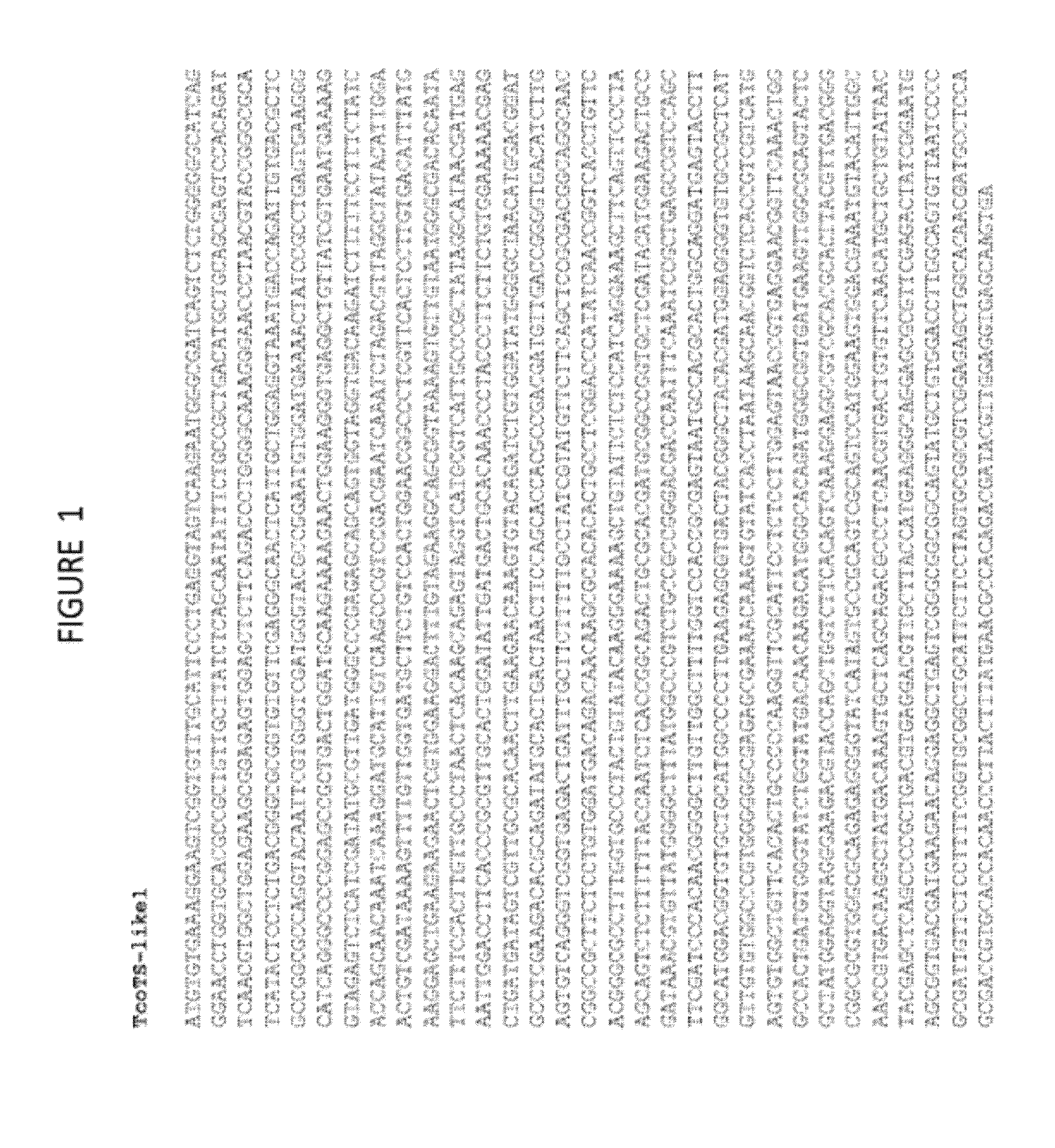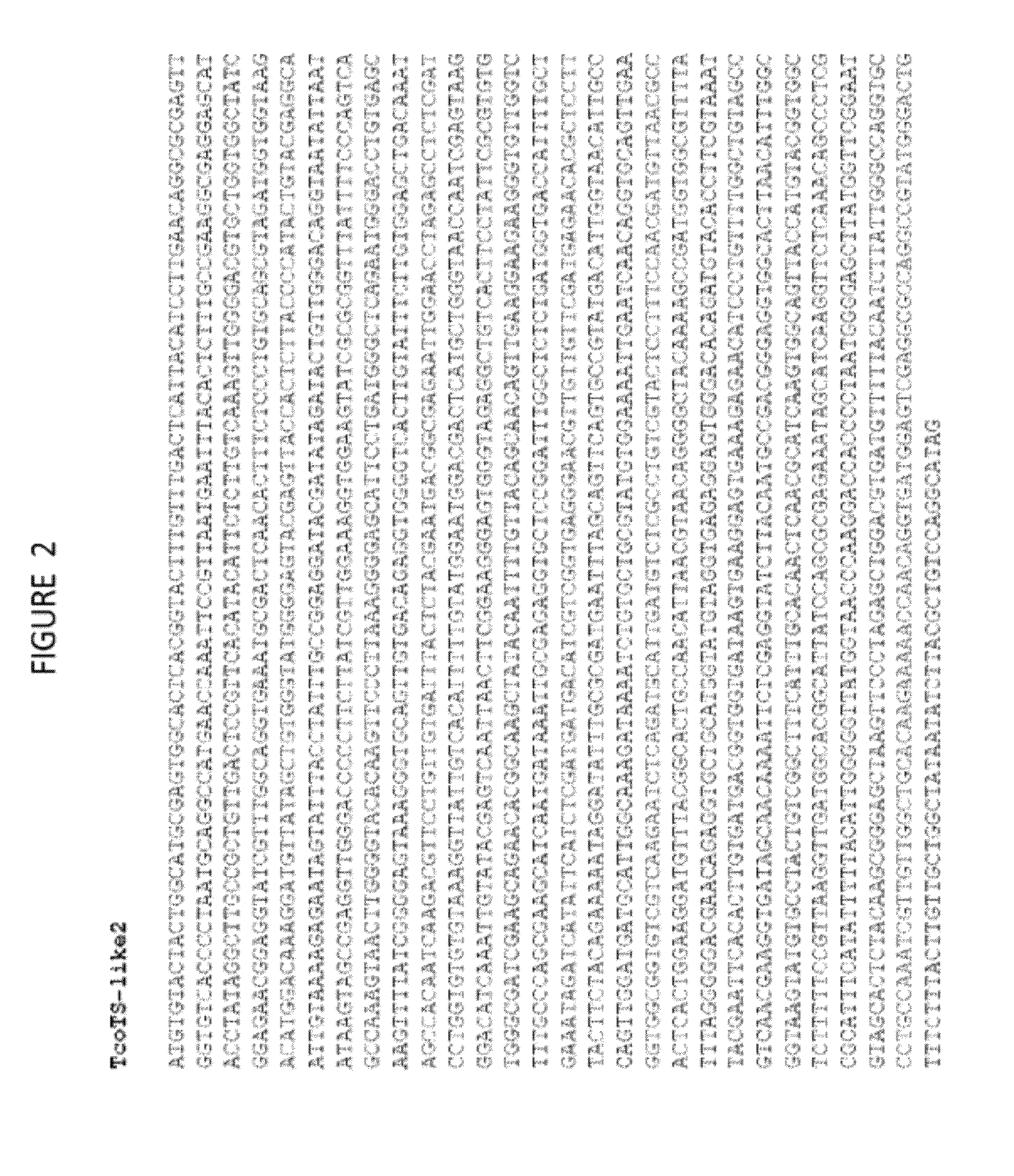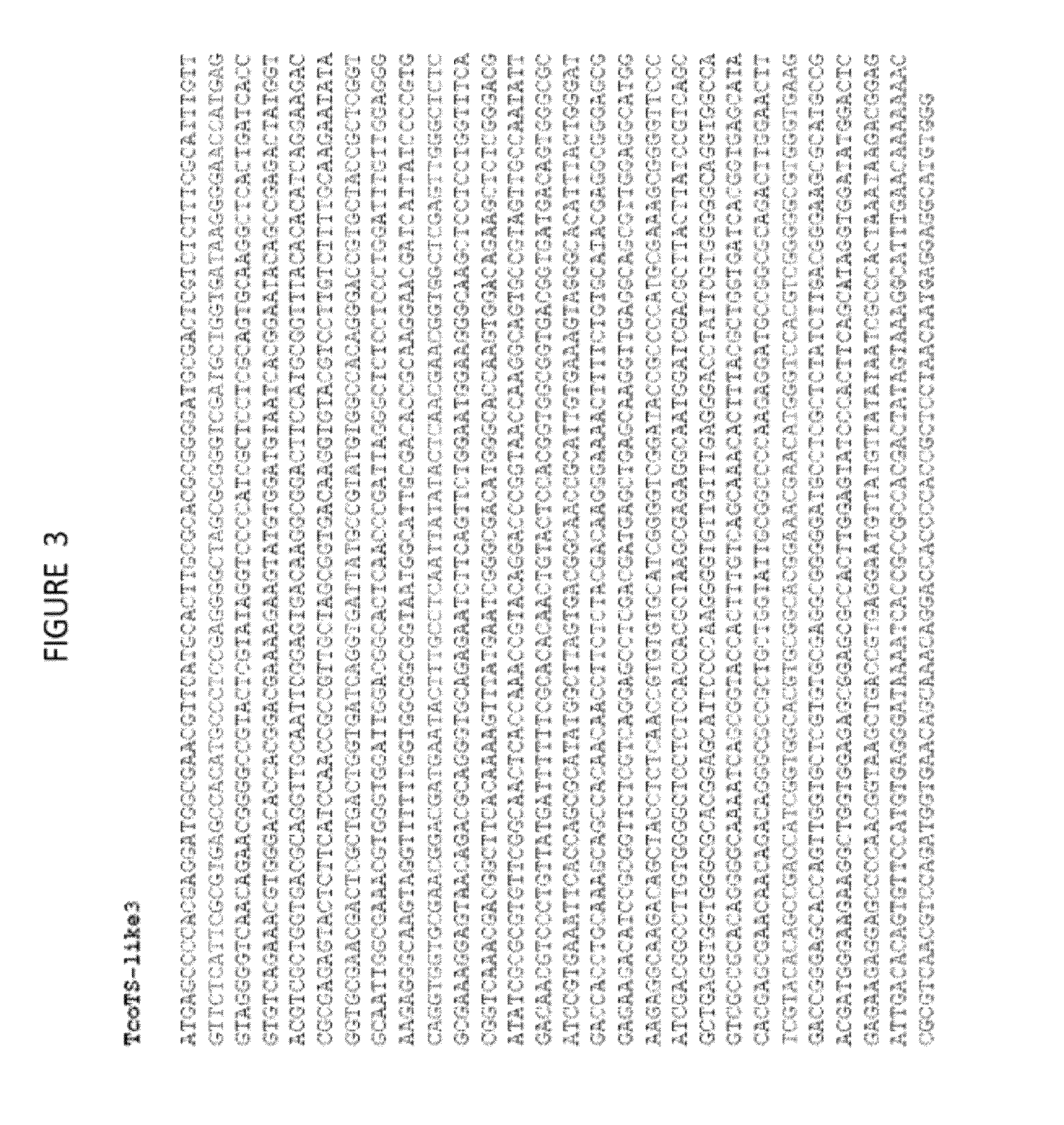Anti-trypanosomiasis vaccines and diagnostics
a technology of vaccines and diagnostics, applied in the field of anti-trypanosomiasis vaccines and diagnostics, can solve the problems of no new molecule placed on the market for at least 30 years and significant indirect health effects
- Summary
- Abstract
- Description
- Claims
- Application Information
AI Technical Summary
Benefits of technology
Problems solved by technology
Method used
Image
Examples
example 1
Production of Polyclonal Antibodies Directed Against the TcoTS-A1 Protein
[0134]The TcoTS-A1 protein was produced in the yeast Pichia pastoris. To that end, the X33 strain was transformed by the PICZ vector (Invitrogen) containing the sequence coding for the TcoTS-A1 protein lacking its first 29 amino acids. The protein secreted in the culture supernatant after 4 days of expression induction in methanol was purified by successive ion-exchange chromatographies. First, the culture supernatant was dialyzed against 20 mM Na acetate buffer (pH 4.5) for 16 hours, centrifuged for 30 minutes at 10,000 g, and then subjected to chromatography on one 1 ml HiTrap SP HP column (GE Healthcare). Elution was carried out according to a linear gradient of 0-1 M NaCl. Fractions containing sialidase activity (fluorometry test with the substrate 2′-(4-methylumbelliferyl)-α-D-N-acetylneuraminic acid, as described in the publication by Montagna et al. (2006) J. Biol. Chem. 281(45): 33949-58), were combined...
example 2
Production of Polyclonal Antibodies Directed Against Peptides from Sialidase-Related Sequences
[0136]The following peptides: C-RTSIDYHLIDTVAKYSADDG (SEQ ID NO: 23), C-PKNIKGSWHRDRLQLWLTD (SEQ ID NO: 24) and C-PVSAQGQDHRYEAANAEHT (SEQ ID NO: 25), named peptides 1, 2 and 3, respectively, were coupled via the N-terminus cysteine with a carrier protein (KLH) activated by a maleimide functional group and used to immunize rabbits on a schedule of one 100 μg injection every 20 days for a total of five injections. For the first injection, the recombinant protein was mixed in emulsion form with Freund's complete adjuvant and then for the following injections with Freund's incomplete adjuvant. The polyclonal sera obtained, designated anti-peptide 1 antibody, anti-peptide 2 antibody and anti-peptide 3 antibody, respectively, were collected at the end of the experiment and verified for their reactivity against their respective peptide by indirect ELISA.
example 3
Demonstration of TcoTS-A1, TcoTS-A2, TcoTS-A3 and TcoTS-Like 2 Protein Expression in T. congolense Blood Forms
[0137]3 ml of rabbit serum or 1 ml of mouse serum was dialyzed against 1 l of 20 mM phosphate buffer (pH 7) for 16 hours. The dialyzed serum was centrifuged for 20 minutes at 5,000 g and then passed through one protein G sepharose Fast Flow column (GE healthcare) prepared beforehand as indicated by the manufacturer. After washing the column with 20 mM phosphate buffer (pH 7), the IgG bound to the column were eluted with 0.1 M glycine HCl buffer (pH 2.6). The IgG thus purified were dialyzed for 16 hours against 1 l of 0.1 M NaHCO3 (pH 8.3) / 0.5 M NaCl buffer. The IgG were then incubated for 2 hours at room temperature with CNBr-activated sepharose (Sigma) prepared beforehand according to the manufacturer's recommendations. After centrifugation for 1 minute at 1,000 g, the resin was washed with the previous buffer and then saturated by adding 0.1 M Tris-HCl (pH 8) for 2 hours a...
PUM
| Property | Measurement | Unit |
|---|---|---|
| temperature | aaaaa | aaaaa |
| pH | aaaaa | aaaaa |
| pH | aaaaa | aaaaa |
Abstract
Description
Claims
Application Information
 Login to View More
Login to View More - R&D
- Intellectual Property
- Life Sciences
- Materials
- Tech Scout
- Unparalleled Data Quality
- Higher Quality Content
- 60% Fewer Hallucinations
Browse by: Latest US Patents, China's latest patents, Technical Efficacy Thesaurus, Application Domain, Technology Topic, Popular Technical Reports.
© 2025 PatSnap. All rights reserved.Legal|Privacy policy|Modern Slavery Act Transparency Statement|Sitemap|About US| Contact US: help@patsnap.com



